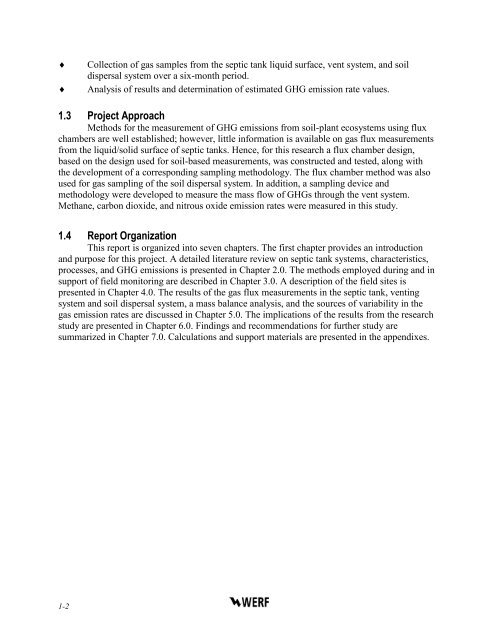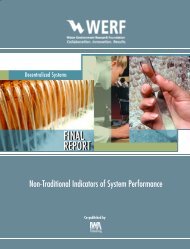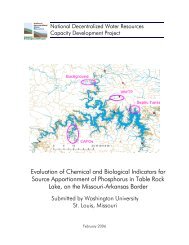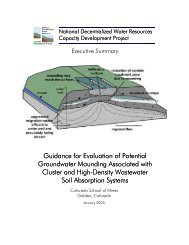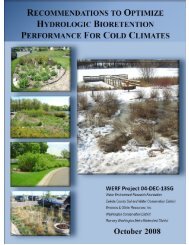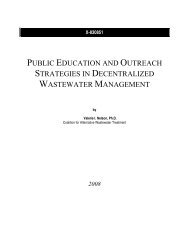Evaluation of Greenhouse Gas Emissions from Septic ... - Geoflow
Evaluation of Greenhouse Gas Emissions from Septic ... - Geoflow
Evaluation of Greenhouse Gas Emissions from Septic ... - Geoflow
Create successful ePaper yourself
Turn your PDF publications into a flip-book with our unique Google optimized e-Paper software.
♦♦Collection <strong>of</strong> gas samples <strong>from</strong> the septic tank liquid surface, vent system, and soildispersal system over a six-month period.Analysis <strong>of</strong> results and determination <strong>of</strong> estimated GHG emission rate values.1.3 Project ApproachMethods for the measurement <strong>of</strong> GHG emissions <strong>from</strong> soil-plant ecosystems using fluxchambers are well established; however, little information is available on gas flux measurements<strong>from</strong> the liquid/solid surface <strong>of</strong> septic tanks. Hence, for this research a flux chamber design,based on the design used for soil-based measurements, was constructed and tested, along withthe development <strong>of</strong> a corresponding sampling methodology. The flux chamber method was alsoused for gas sampling <strong>of</strong> the soil dispersal system. In addition, a sampling device andmethodology were developed to measure the mass flow <strong>of</strong> GHGs through the vent system.Methane, carbon dioxide, and nitrous oxide emission rates were measured in this study.1.4 Report OrganizationThis report is organized into seven chapters. The first chapter provides an introductionand purpose for this project. A detailed literature review on septic tank systems, characteristics,processes, and GHG emissions is presented in Chapter 2.0. The methods employed during and insupport <strong>of</strong> field monitoring are described in Chapter 3.0. A description <strong>of</strong> the field sites ispresented in Chapter 4.0. The results <strong>of</strong> the gas flux measurements in the septic tank, ventingsystem and soil dispersal system, a mass balance analysis, and the sources <strong>of</strong> variability in thegas emission rates are discussed in Chapter 5.0. The implications <strong>of</strong> the results <strong>from</strong> the researchstudy are presented in Chapter 6.0. Findings and recommendations for further study aresummarized in Chapter 7.0. Calculations and support materials are presented in the appendixes.1-2


